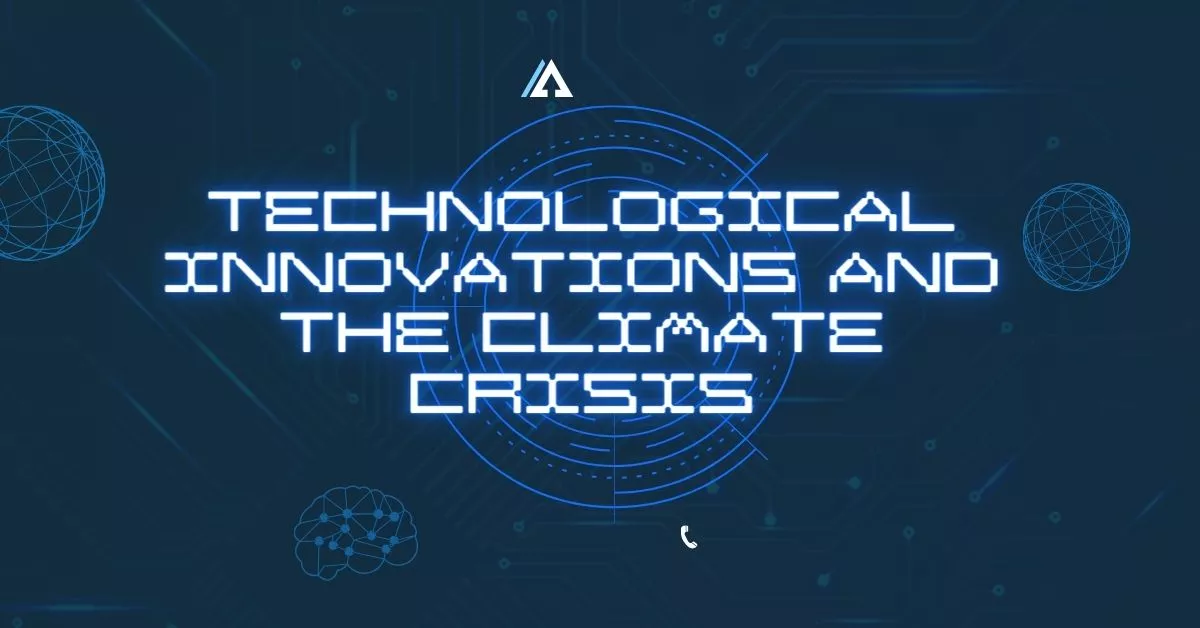The looming threat of climate change demands a multifaceted approach, and technological advancements are emerging as vital components in combating this crisis. Innovation has provided an arsenal of tools to address environmental challenges, offering a glimmer of hope in our battle against climate change.

Role of Renewable Energy
Renewable energy sources, such as solar and wind power, have gained prominence as sustainable alternatives to fossil fuels. Their increasing affordability and efficiency pave the way for a cleaner energy future, significantly reducing carbon emissions.
Carbon Capture and Storage
Innovations in carbon capture and storage technology offer a promising solution. These advancements aim to capture CO2 emissions from various sources and store them underground, preventing their release into the atmosphere.
AI-Powered Climate Modeling
AI-driven climate models leverage machine learning to enhance weather predictions and climate analysis. This technology aids in understanding climate patterns, offering insights crucial for devising effective mitigation strategies.
Challenges on the Horizon
Despite these advancements, challenges persist. Scalability, affordability, and global implementation remain substantial hurdles. Overcoming these obstacles demands collaborative efforts and sustained innovation.
The Way Forward
The future hinges on continuous research, innovation, and policy implementations. Collaboration between governments, industries, and individuals is imperative to harness technology’s potential fully.

Conclusion
Technology is undoubtedly a powerful ally in the fight against climate change. While it isn’t a standalone solution, its integration into broader strategies offers a promising path to address this global crisis.
Frequently Asked Questions
How is technology contributing to climate change solutions?
Technology is playing a crucial role in developing and implementing solutions to combat climate change. From renewable energy sources to advanced energy efficiency measures, technology is providing innovative tools to reduce greenhouse gas emissions and mitigate the impacts of climate change.
Here are some specific examples of how technology is contributing to climate change solutions:
- Renewable energy: Solar, wind, geothermal, and hydroelectric power are rapidly becoming more cost-competitive and efficient, offering viable alternatives to fossil fuels.
- Energy efficiency: Advances in building materials, appliances, and industrial processes are reducing energy consumption and minimizing carbon emissions.
- Smart grids: Intelligent energy systems are optimizing power distribution, reducing waste, and enabling the integration of renewable energy sources.
- Carbon capture and storage (CCS): Technologies are being developed to capture carbon dioxide emissions from industrial processes and power plants, preventing them from entering the atmosphere.
- Climate modeling: Sophisticated computer models are helping scientists better understand climate patterns, predict future changes, and develop effective mitigation strategies.
What are the current challenges in using technology to combat climate change?
Despite the potential of technology, there are several challenges that need to be addressed to fully harness its potential for combating climate change. These challenges include:
- Cost: Some technologies, such as renewable energy storage and CCS, are still relatively expensive, requiring further development and cost reduction to make them widely applicable.
- Infrastructure: Transitioning to a low-carbon economy requires significant investments in new infrastructure, such as solar and wind farms, transmission lines, and smart grid technologies.
- Policy and regulation: Effective policies and regulations are needed to support the development and deployment of clean technologies, create incentives for emission reductions, and establish carbon pricing mechanisms.
- Public acceptance: Gaining public acceptance for new technologies, such as offshore wind farms or carbon capture pipelines, can be challenging due to concerns about environmental impacts and visual aesthetics.
Can technology alone solve the global climate crisis?
While technology is an essential tool in the fight against climate change, it cannot be the sole solution. Technological advancements must be complemented by other measures, such as behavioral changes, sustainable practices, and effective policy interventions.
Individual actions, while seemingly small, can collectively make a significant difference. Here are some ways individuals can contribute to technological solutions for climate change:
- Support clean energy: Choose renewable energy providers, advocate for clean energy policies, and consider investing in renewable energy projects.
- Adopt energy-efficient practices: Upgrade to energy-efficient appliances, adopt smart home technologies, and optimize home energy use.
- Embrace sustainable transportation: Choose public transport, cycling, or walking whenever possible, and consider switching to an electric vehicle.
- Support sustainable technologies: Support companies developing innovative climate solutions and invest in sustainable products and services.
- Educate and advocate: Raise awareness about climate change and the role of technology, and advocate for policies and investments that accelerate the transition to a low-carbon economy.
